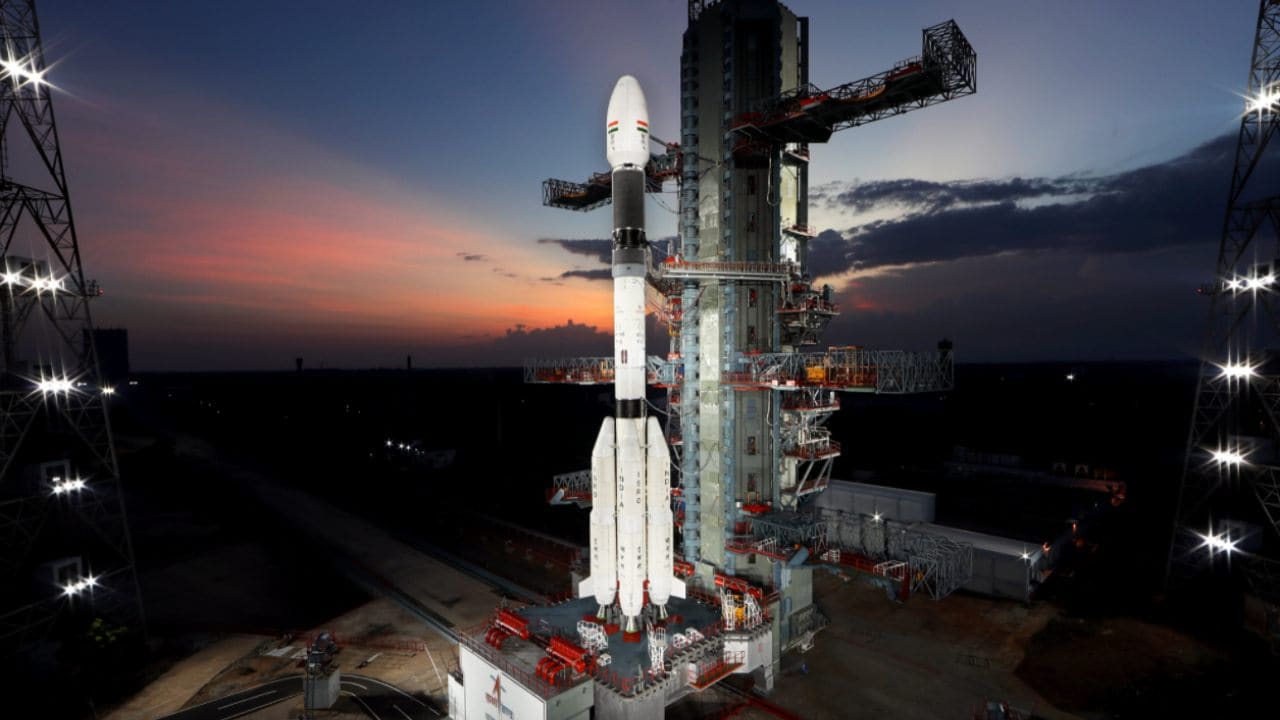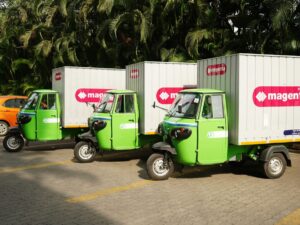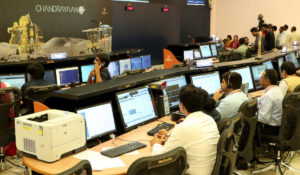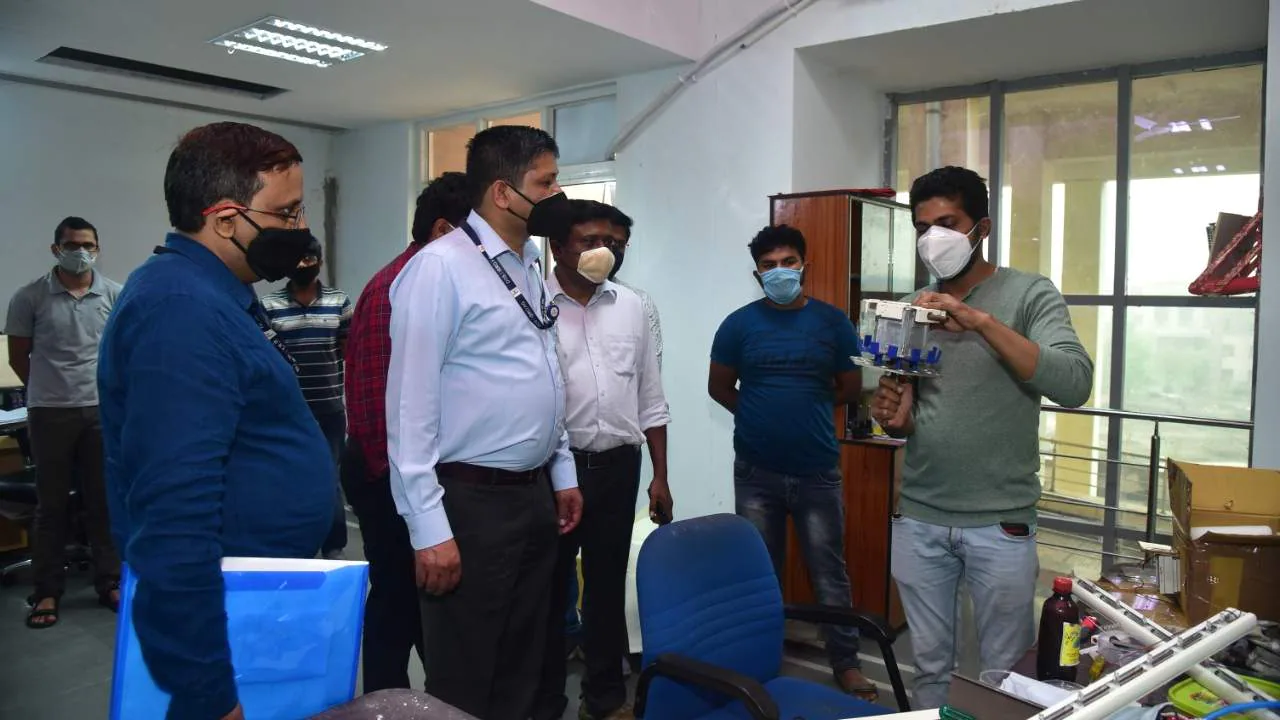tech2 News StaffSep 01, 2021 11:06:42 IST
The Indian Space Research Organisation recently conducted a hot test on its Gaganyaan Service Module (SM) Propulsion System on 28 August.
This was the first hot test of the System Demonstration Model (SDM) of the Gaganyaan SM Propulsion System which differs from the hot test the agency conducted on the Vikas engine.
The test was conducted in the ISRO Propulsion Complex (IPRC), Mahendragiri, Tamil Nadu for a duration of 450 seconds.

Representational Image. The GSLV-F10 will launch the EOS-03 satellite today, 12 August at 3.43 pm IST from Satish Dhawan Space Centre (SDSC) SHAR, Sriharikota.
Image credit: ISRO
According to an ISRO statement, the system performance met the test objectives and was a close match with pre-test predictions.
A series of hot tests will be conducted to simulate various mission conditions as well as off-nominal conditions.
The Service Module is part of the Gaganyaan Orbital module and is located below the crew module and remains connected to it until re-entry.
On August 28, 2021, ISRO successfully conducted the first hot test of the System Demonstration Model (SDM) of the Gaganyaan Service Module Propulsion System at the test facility of ISRO Propulsion Complex (IPRC), Mahendragiri, Tamil Nadu. https://t.co/7XstXIkJjB pic.twitter.com/gCZyNGoIoO
— ISRO (@isro) August 28, 2021
The SM Propulsion System consists of a unified bipropellant system consisting of 5 nos. of 440 N thrust engines and 16 nos. of 100 N Reaction Control system (RCS) thrusters with MON-3 and MMH as Oxidizer and Fuel respectively. The System Demonstration Model (SDM), consisting of 5 nos. of 440 N engines and 8 nos. of 100 N thrusters.
Gaganyaan astronauts go back to Russia
The objective of the Gaganyaan programme is to demonstrate the capability to send humans to low earth orbit onboard an Indian launch vehicle and bring them back to earth.
Four Indian Air Force (IAF) pilots have been selected to take part in this human spaceflight. They recieved their training from the Russian space agency Roscosmos over a period of one year in Russia’s Zvyozdny gorodok city near Moscow.
According to PTI, the contract for the training of the astronauts was signed between ISRO and Russian launch service provider Glavcosmos in June 2019.
The training began on 10 February 2020, but it was temporarily interrupted due to the COVID-19 pandemic. They completed their training and returned to India sometime in March.
Called Indian gaganauts, only three astronauts will go to space however four men have undergone training to ensure that there is a ready backup in case of an emergency.
The four IAF pilots include a Group Captain and three Wing Commanders, according to the IAF sources.
Recent reports have said that the gaganauts will have to return back to Russia for some additional training as well as to get fitted for their spacesuits.
“We also expect our astronauts to return to Russia for very specific tasks. The space suits are being stitched in Russia and they will be coming here to Moscow to undertake tailoring measurements,” said D.B. Venkatesh Varma, Ambassador of India to Russia to The Hindu.
The spacesuits are being made by Zvezda, a Russian research, development and production enterprise under the contract of Glavkosmos (a subsidiary of Roscosmos) along with ISRO’s Human Spaceflight Centre (HSC).
Gaganauts training
During their time spent in Russia, the IAF pilots had general space training and systems training of the Soyuz MS crewed spacecraft along with learning the Russian language.
According to The Hindu, they also learnt crew actions in the event of an abnormal descent module landing that was conducted in the wooded and marshy areas in winter – completed in February 2020, on the water surface in June 2020 and in the steppe in summer – completed in July 2020.
They were also recieved training in preparing for sustaining spaceflight factors, such as G-force, hypoxia and pressure drop, Roscosmos said.
After their one year session in Russia, ISRO officials had said they received module-specific training where they were trained in crew and service module designed by ISRO, learn to operate it, work around it and do simulations.
Private enterprise to build PSLV
ISRO’s PSLV has often been called the agency’s “Workhorse” as it is constantly used to launch various satellites to Low Earth Orbit (LEO).
According to news reports, private companies are looking into building the Polar Satellite Launch Vehicle (PSLV), from end to end. This will be the first time that a company other than an ISRO-led company will do so.
While five companies were interested, only three companies have submitted bids as yet. They include two consortia led by Adani and L&T respectively and one individual company.
After speaking to multiple sources, TOI reported that the contract will be to build five launch vehicles and that these three companies had submitted their bids in response to a request for proposal (RFP) issued by New Space India Limited (NSIL).
The contract is supposed to be announced by year-end.
NSIL is ISRO’s commercial arm and in March this year, Chairman and Managing Director G Narayanan told PTI that it was in the process of identifying an Indian industry partner (which could be a consortium of companies or a company) to undertake end-to-end production of the PSLV.
“We expect to complete this complex process in about six to eight months. Once the Indian industry partner is identified, I am confident that they will be in a position to deliver an entirely built PSLV in about two to three years with appropriate hand-holding from SRO”, he said.
As part of this business initiative, NSIL has proposed to realise five PSLVs through identified Indian industry partners.
“As of now, about 80 percent of mechanical systems and 60 percent of electronic systems of PSLV come from the industry. However, the remaining percentages in both the areas are highly complex”, he said.
NSIL had launched its first commercial mission on 28 February which was the launch of the Brazilian satellite Amazonia-1 from Sriharikota.










